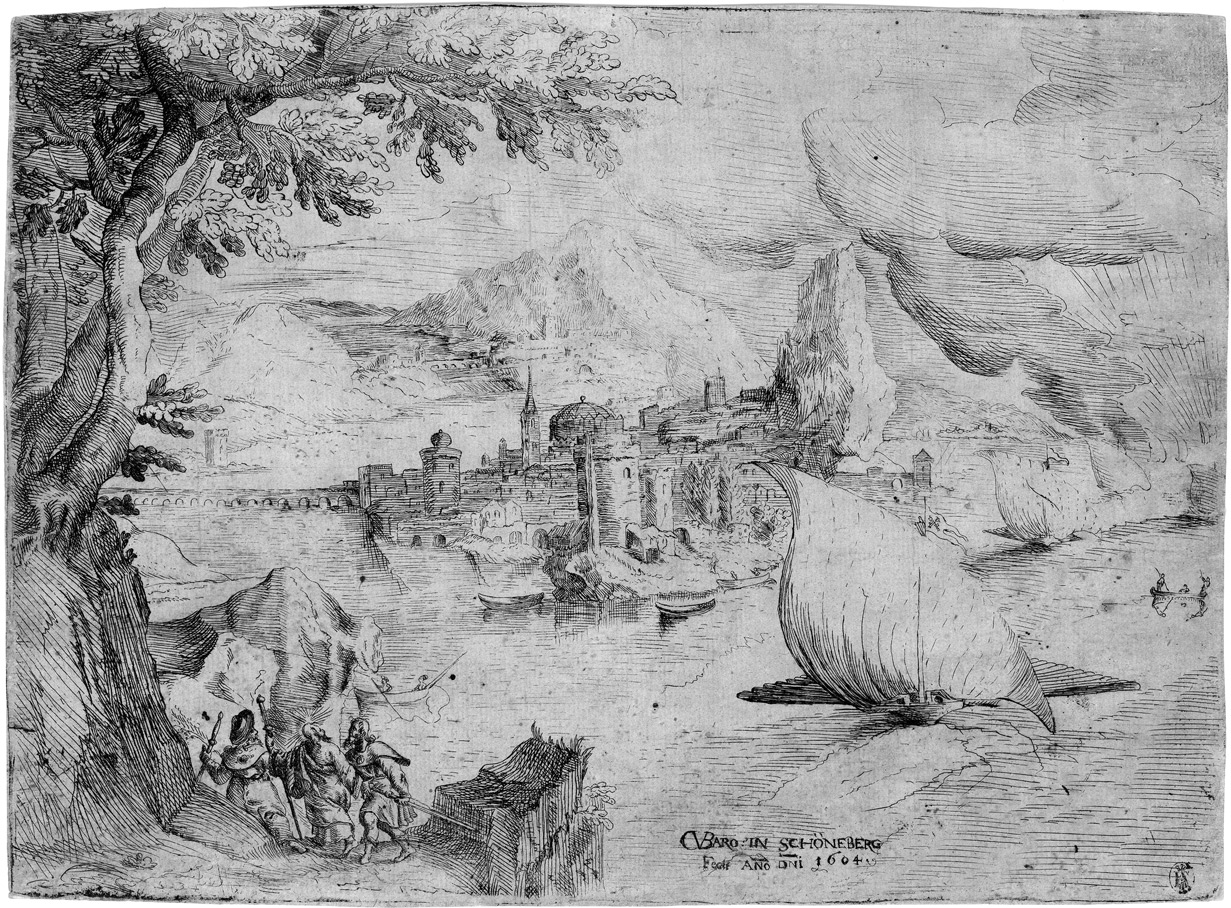Loading the page ...
Monogrammist CVBaro
(active in Germany early 17th Century)
A Wide, Mountainous River Landscape with the Disciples on the Road to Emmaus. Etching. 20.8 x 28.3 cm. CVBaro: in Schöneberg / Fecit Anno Dni 1604. Undescribed.
The monogram of this anonymous German etcher is not included in Nagler’s Die Monogrammisten and, indeed, this charming if enigmatic work seems not to have been described at all. This is a clear indication of the great rarity of this etching, as there are astonishingly few prints that have escaped the attention of such a profound and meticulous connoisseur as Georg Kaspar von Nagler (1801–1866).
The scene is depicted in a very free, spontaneous and sketchy etching technique. In the left foreground we see the three Emmaus disciples under the leafy boughs of some massive tree trunks, which serve as a repoussoir. In the middle ground there is a wide landscape with a river up which a fleet of galleys is heading full sail directly towards the beholder. Behind it we perceive the bizarre silhouette of a town with fortified towers, cupolas and church spires. An alpine landscape extends to the horizon, while in the sky above a storm looms. Noteworthy is the eclectic character of the formal language employed. The rendering of the galleys has derived from an engraving by Frans Huys after Brueghel (Hollstein 107), while the treatment of the trees in the foreground is strongly reminiscent of Paul Bril. Indeed, the expansive, multilayered arrangement of the composition reveals strong similarities with compositional devices used by that roughly contemporary Flemish master, although the linework is cruder and more robust. Is this an isolated excursion into etching by an anonymous painter? At all events, the inscription provides no further clues to the identity or provenance of the author. Perhaps he came from Schöneberg near Berlin, which in 1506 came under the sovereignty of the Elector of Brandenburg, Joachim I. But even this seems barely plausible, so the question as to the identity of the author of this fascinating little print remains unanswered.
A very fine, contrasting impression printed with burr, with narrow margins around the platemark, on the verso a faint counterproof of the same print. Minor defects, otherwise in excellent and unrestored condition. From the collection of Friedrich August II of Saxony (Lugt 971).
